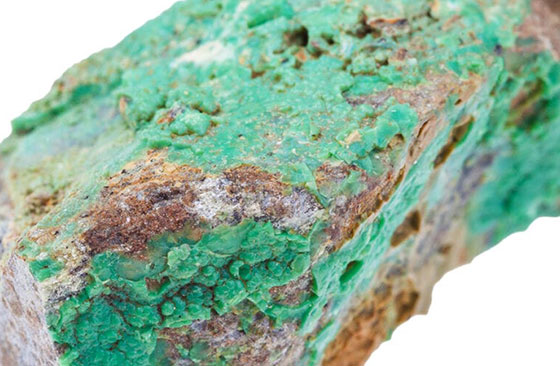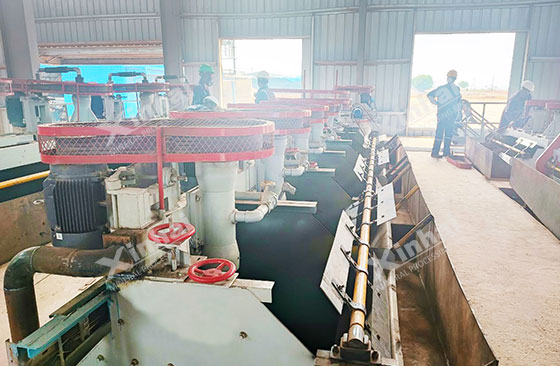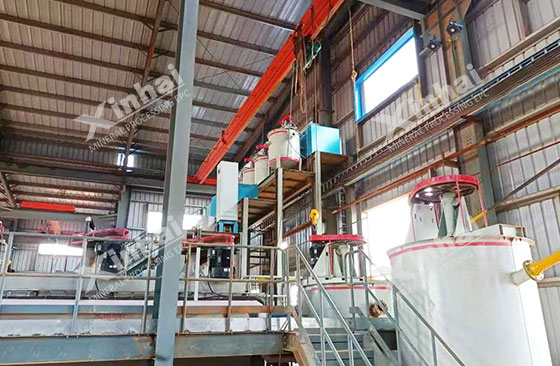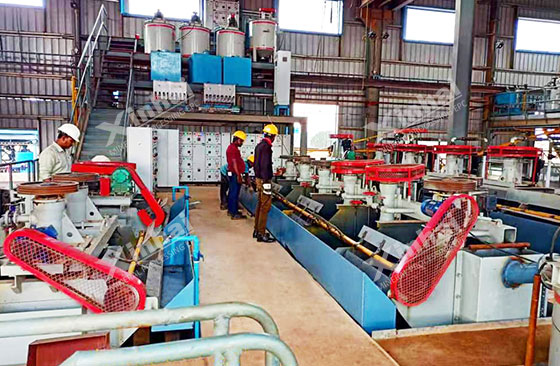
Nickel and cobalt are indispensable key metals in modern industry and are widely used in many fields such as batteries, alloys, catalysts, etc. With the increasing global demand for clean energy and efficient materials, the development and utilization of nickel-cobalt ores have become particularly important. As a major mineral processing technology, the sulfide flotation process plays a vital role in the efficient extraction of nickel-cobalt ore resources due to its good separation effect, high recovery rate, and strong adaptability. In the following, you can learn about the sulfide flotation process of nickel-cobalt ore and the factors that affect the process.

Nickel-cobalt ore is mainly composed of sulfide minerals such as nickel pyrite, cobalt pyrite, chalcopyrite, etc., and is often associated with oxidized minerals such as magnetite and hematite. The structure of the ore is usually euhedral, semi-euhedral granular or dense blocky. This complex mineral composition makes the beneficiation process of nickel-cobalt ore full of challenges, especially in the flotation process, which requires precise process design and meticulous process control to achieve efficient separation and recovery.

Sulfide flotation process is a mineral processing technology based on the change of chemical properties of mineral surface. The mineral surface is sulfided by adding sulfiding agent, thereby enhancing its hydrophobicity and improving the flotation effect. In this process, the sulfiding agent reacts chemically with the metal ions on the surface of the mineral to generate insoluble metal sulfides. These sulfides adhere to the surface of the mineral to form a hydrophobic film, which enables the mineral particles to adhere to the bubbles and float to the surface of the pulp with the foam, finally achieving the separation of the minerals.
In the sulfide flotation process of nickel-cobalt ore, the selection of sulfiding agent is crucial. Common vulcanizing agents include sodium sulfide, sodium hydrosulfide, sodium thiosulfate, etc. Different vulcanizing agents have different sulfurizing effects on minerals. Therefore, the selection of an appropriate sulfiding agent requires comprehensive consideration of the characteristics of the mineral and the flotation effect. In addition, the dosage of sulfiding agent also has a significant impact on the flotation effect. When the dosage is too small, the sulfurization of the minerals will be incomplete, resulting in poor floatability; when the dosage is too high, the agent will be wasted and the environmental burden will be increased. Therefore, reasonable control of the dosage of the sulfiding agent is the key to improving flotation efficiency.

The nickel-cobalt sulfide flotation process usually includes ore crushing, grinding, flotation, foam collection and product processing. First, the ore needs to be crushed to a suitable particle size, and then ground to a mineral particle size suitable for flotation. In the flotation machine, the slurry is fully mixed with the sulfiding agent and collector, and foam is generated through aeration and stirring. The hydrophobic mineral particles adhere to the bubbles and float to the surface of the slurry to form a foam layer. Finally, the flotation foam is collected and dehydrated, dried and smelted to obtain high-grade nickel-cobalt metal products.
1. Grinding fineness: Grinding is a key link in the sulfide flotation process. Too coarse grinding fineness will lead to incomplete mineral dissociation, thereby reducing the flotation recovery rate; while too fine grinding fineness will easily cause mineral muddling, affecting the flotation effect. Therefore, choosing the right grinding fineness is an important condition for improving flotation efficiency.
2. Type and dosage of sulfiding agent: Different sulfiding agents have different effects, and they need to be selected according to the type of mineral when used. When the dosage of sulfiding agent is insufficient, sulfidation is incomplete, affecting flotation; excessive dosage will waste reagents and pollute the environment.
3. Type and dosage of collector: Collectors help enhance the hydrophobicity of minerals during flotation, thereby improving the flotation effect. Its type and dosage have an important influence on the flotation results. Too much or too little collector will lead to unstable foam or low flotation recovery rate.
4. Type and dosage of frother: frother can stabilize flotation foam and enhance flotation effect. Using too little will lead to unstable foam and reduced flotation efficiency; using too much may cause the foam to be too stable, increase the difficulty of foam breaking, and affect the controllability of flotation operations.

In summary, the sulfide flotation process of nickel-cobalt ore is of great significance in improving resource utilization efficiency and reducing production costs. By optimizing various process parameters and selecting appropriate sulfiding agents, collectors and frothers, not only can the flotation recovery rate be improved, but also the environmental impact can be effectively reduced, providing a guarantee for sustainable mineral resource development.
To find out more about our products and solutions, please fill out the form below and one of our experts will get back to you shortly.